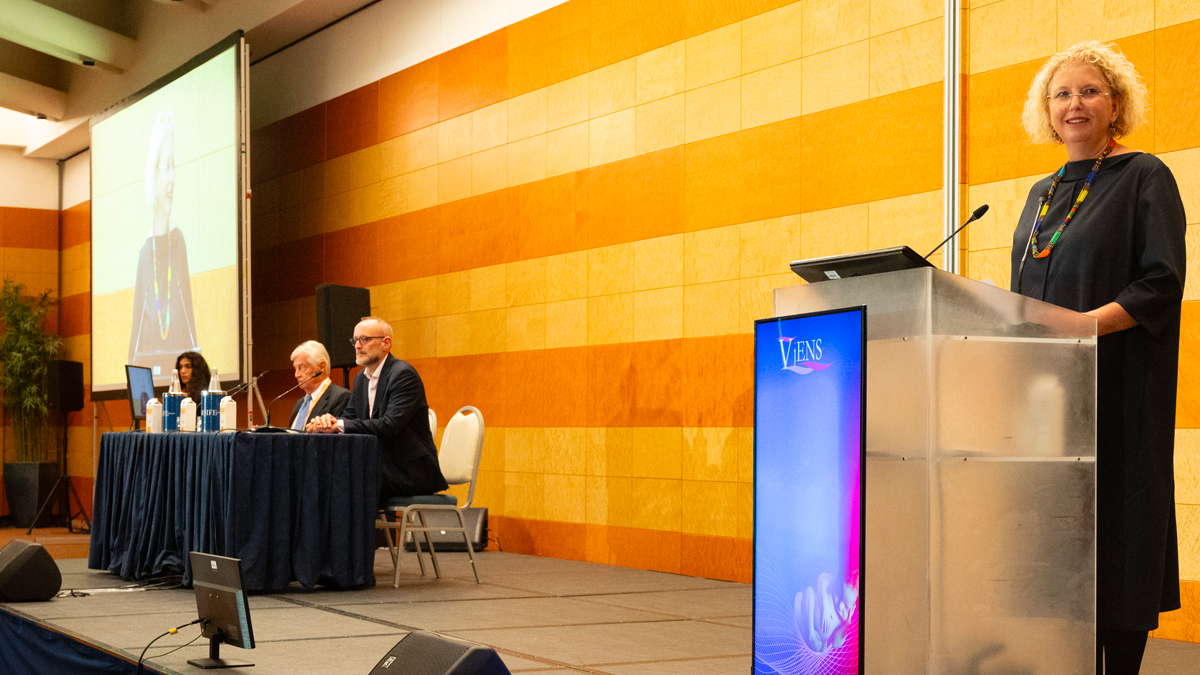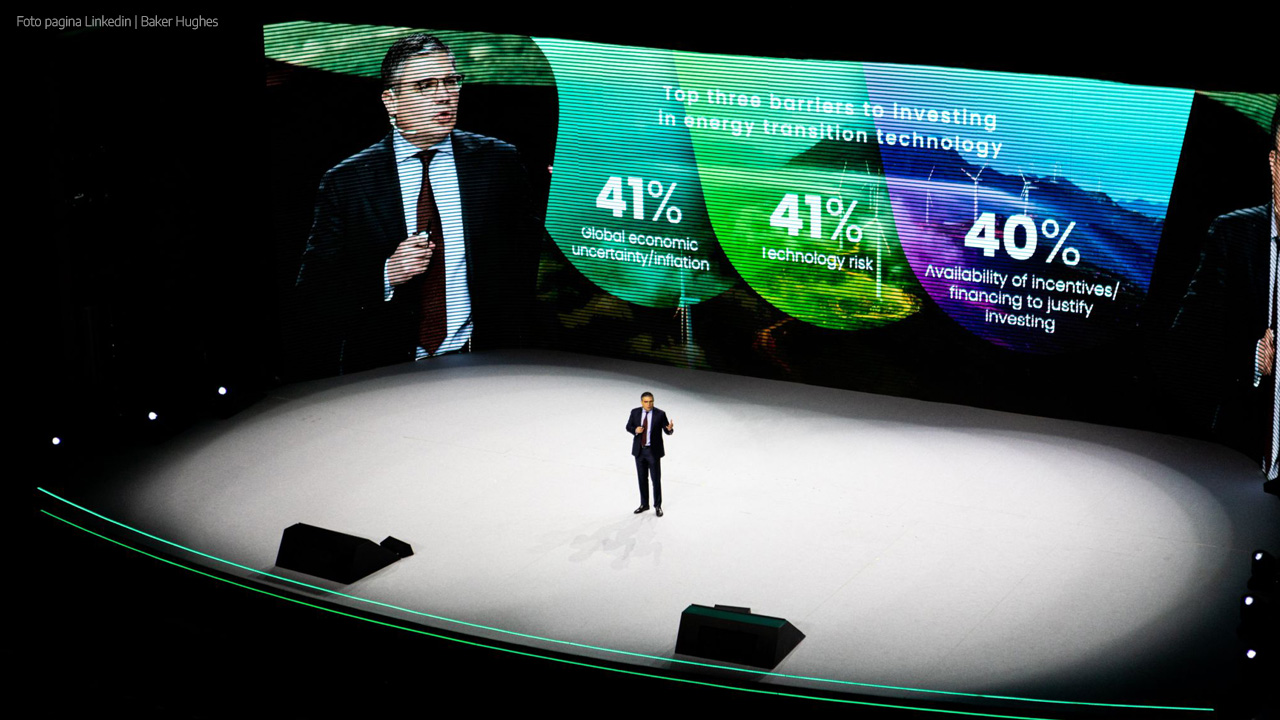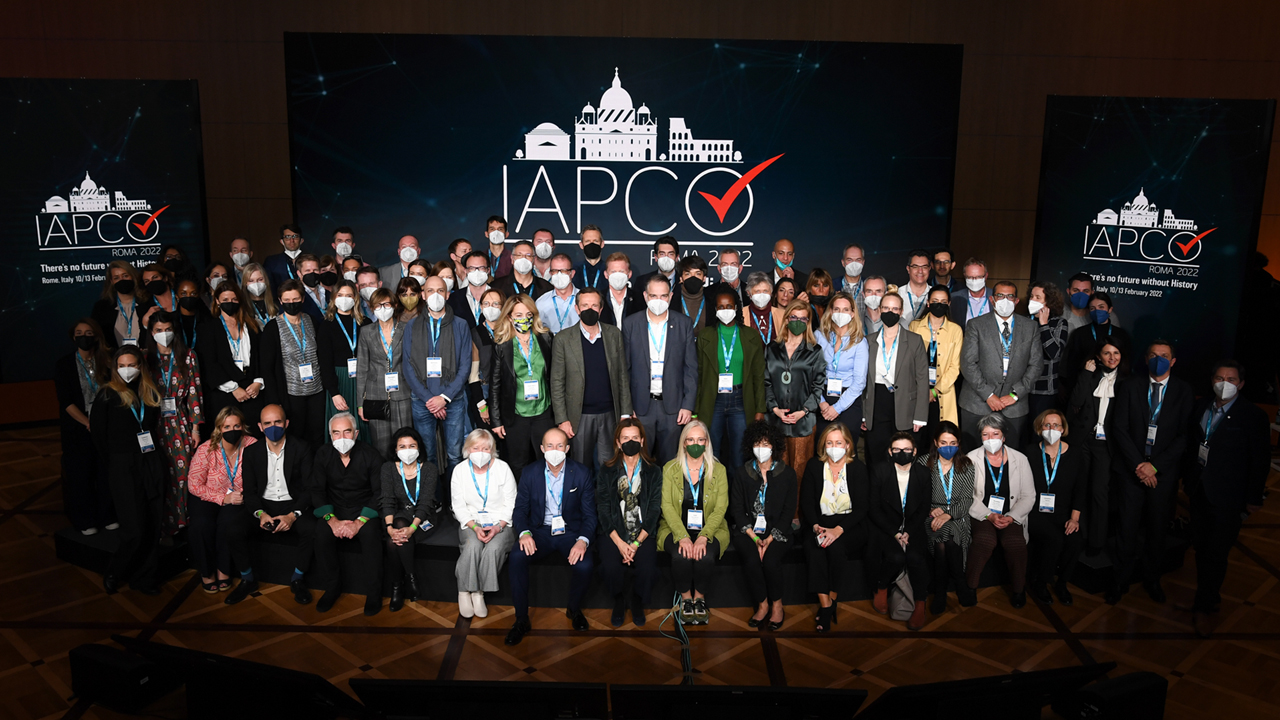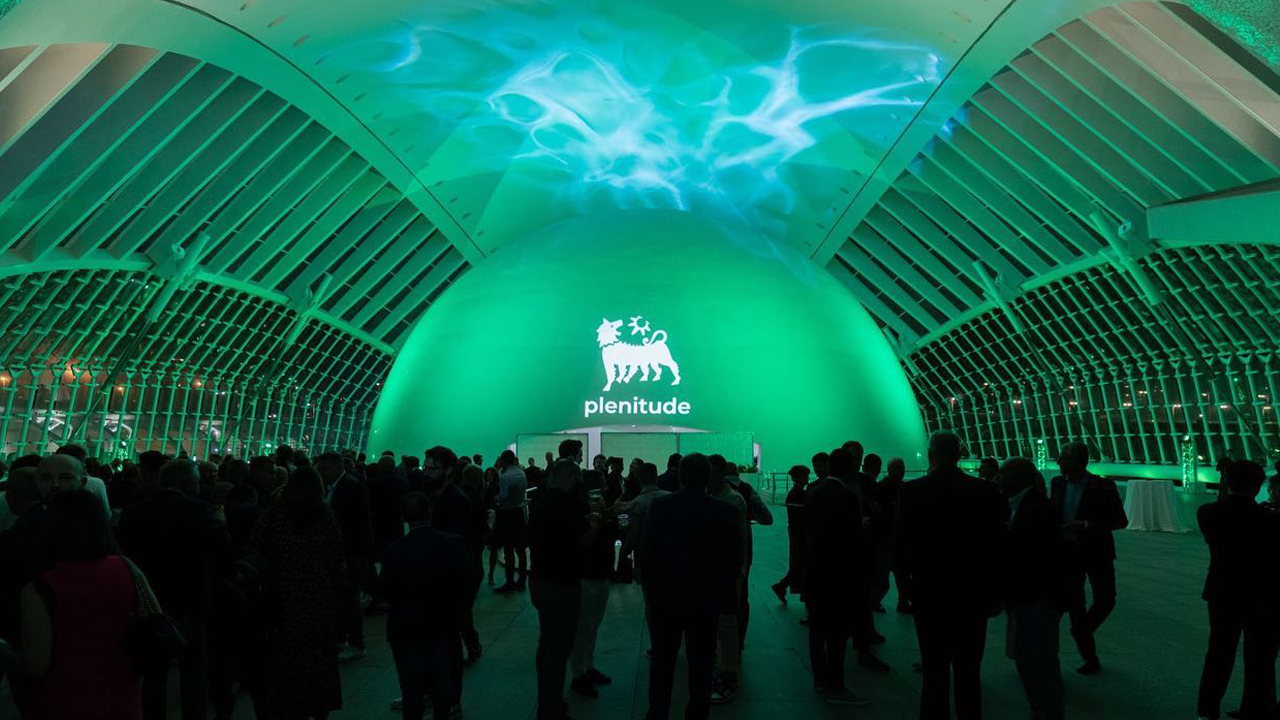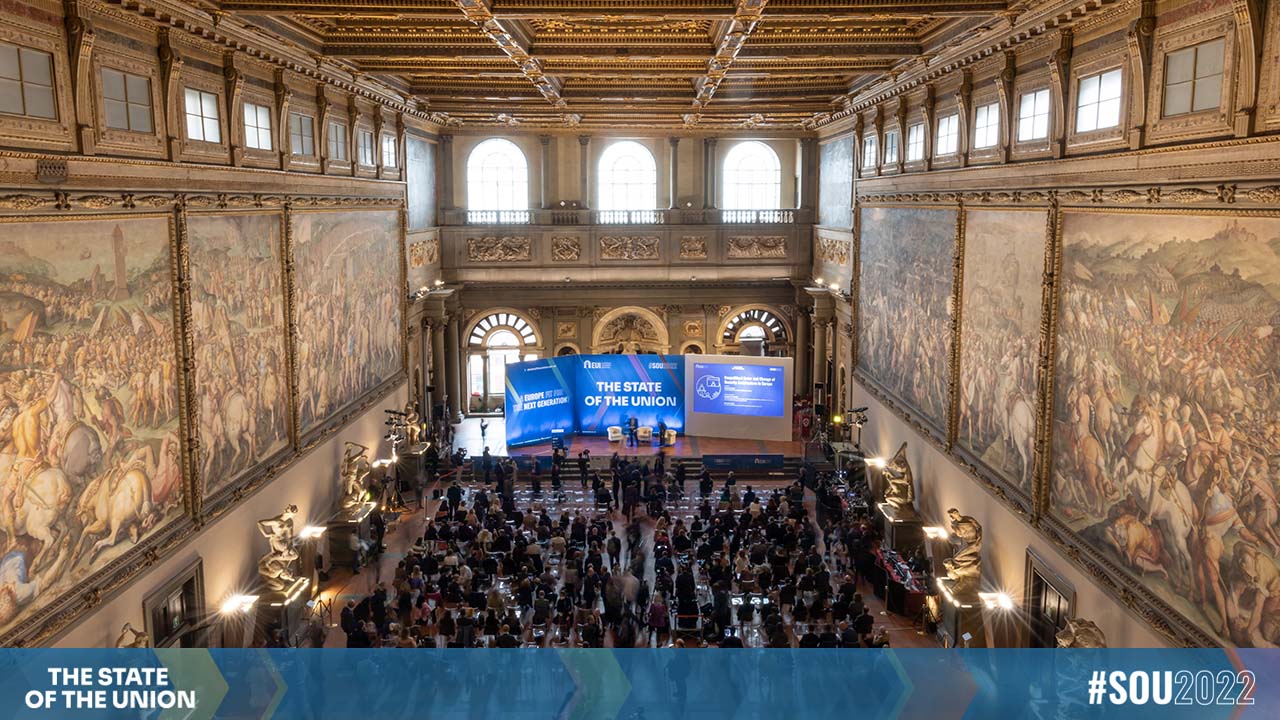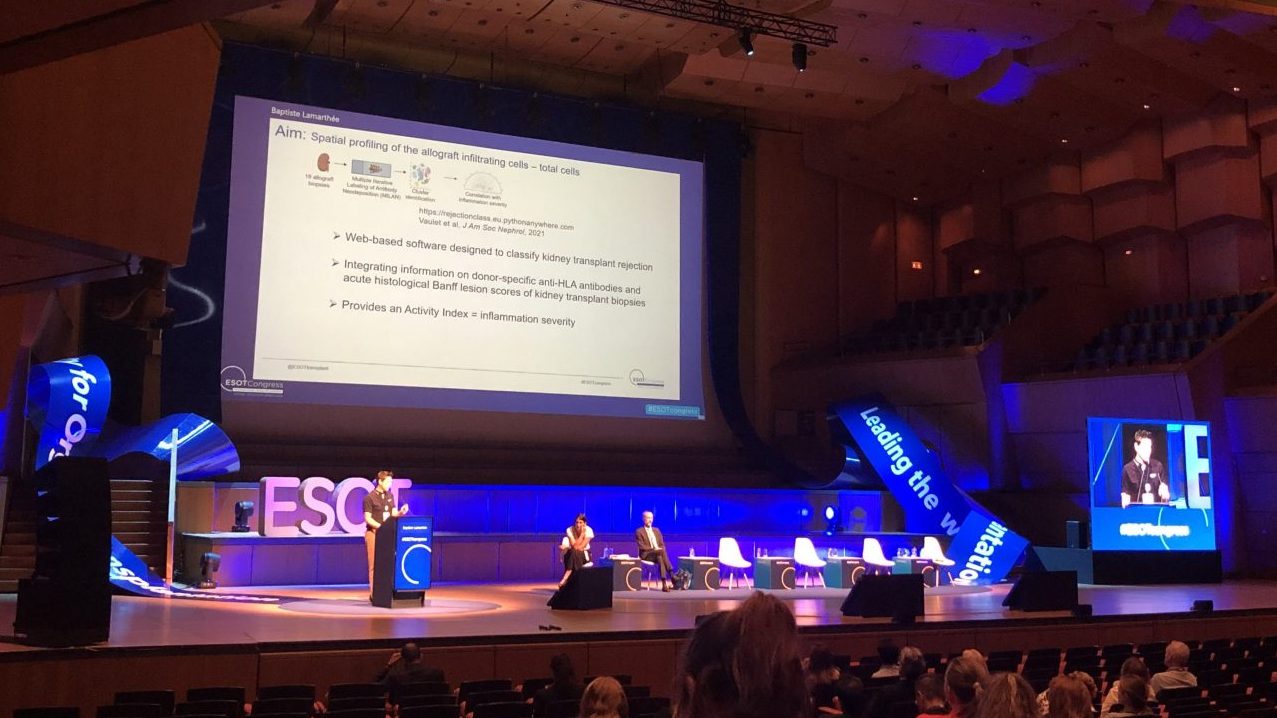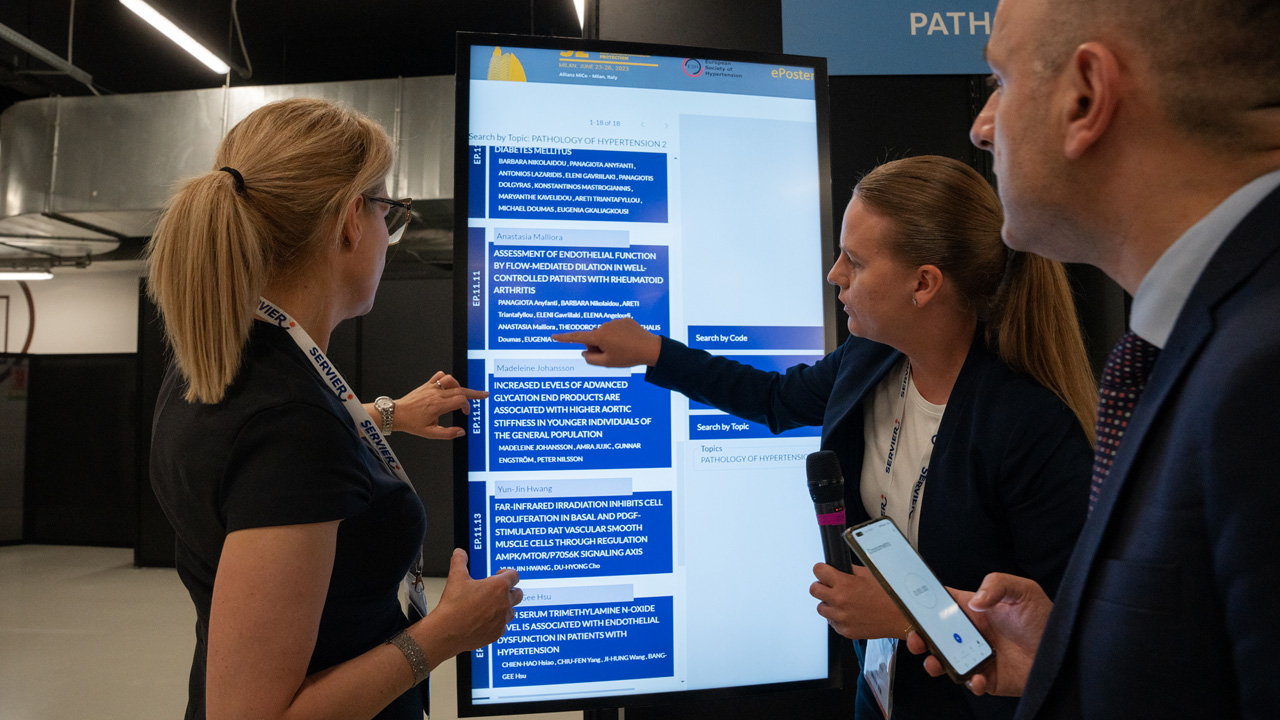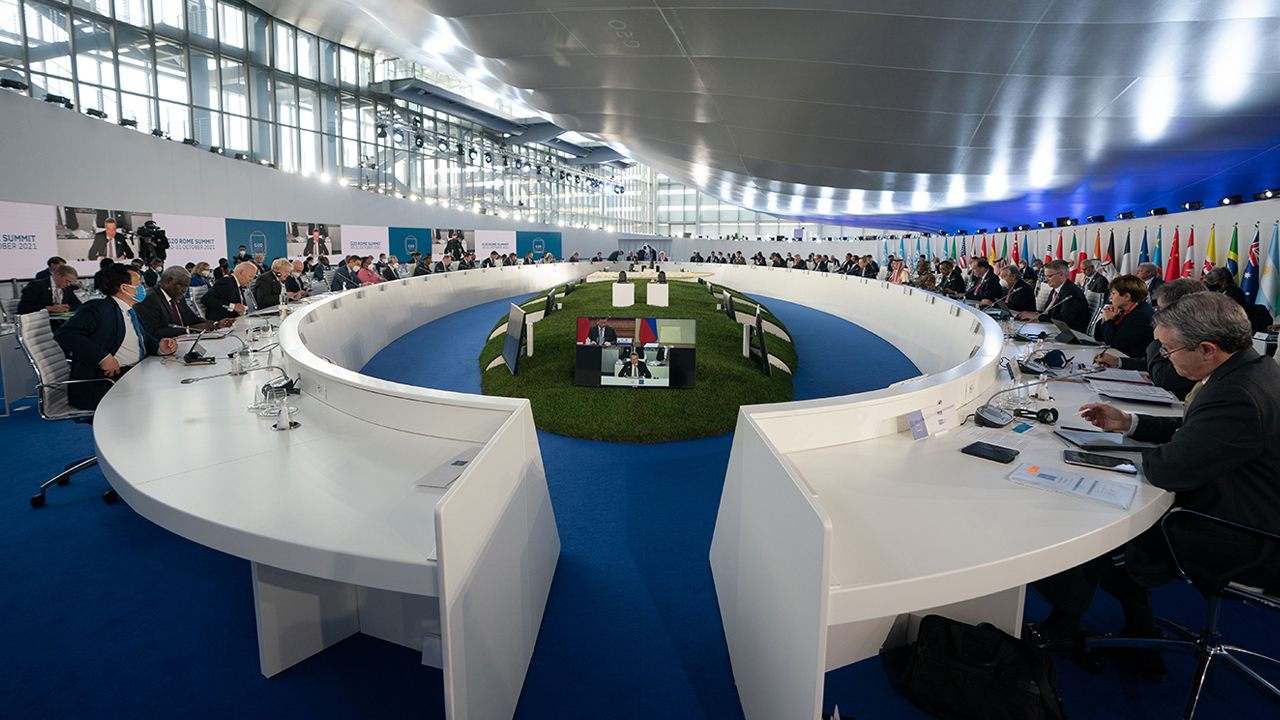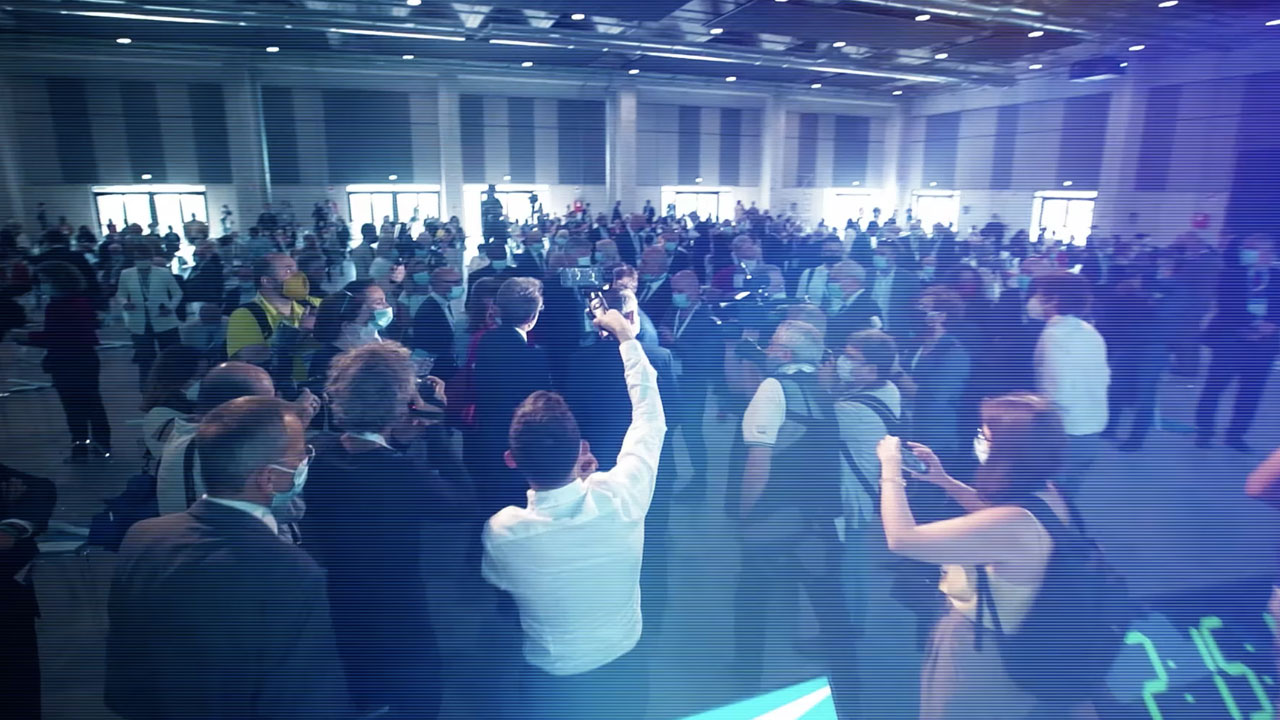INTRODUCTION
With the onset of the pandemic in 2020, virtual events constituted the Meeting Industry‘s reality, the only viable option faced with the physical distances required by social distancing.
The virtual side has, however, crept its way into events which have returned mainly in presence since 2022.
Conceived to meet a necessity, then how is it possible that they are still in the limelight? So let’s find out together.
I. What is a virtual event
Let’s start with the DEFINITION, possibly a bit obvious today, of what a virtual event is: a virtual event is an event that takes place online using digital technologies. Instead of meeting in person at a geographical location, participants connect from different locations using devices such as computers, tablets or smartphones.
A word from the expert
“Virtual sounds like an abstract and complex reality for many, yet we all live with virtual technology already, in most daily tasks,” explains Chiara Francalanci, IT Event Specialist at Tecnoconference. “From buying basic necessities to socialising, from refuelling to booking a gym membership, we live in a computerised and hyper net-connected world. This is why a virtual event should not be seen as a stand-alone, but rather as the union of many tech solutions that we are familiar with.”
In a nutshell, we could say that every event ought to have a digital, or if you like ‘virtual’, aspect. It’s just a matter of which one.
II. 10 benefits of virtual events
Why do people prefer virtual to ‘real’? We asked Chiara Francalanci, IT Event Specialist at TC Group.
Chiara told us 10 true advantages of virtual events. All of which are good reasons to appreciate virtual as an irreplaceable, worthwhile and cost-effective IT solution for organising an event.
2. Straightforward for participants & speakers
Virtual events can be easily accessed by a global audience, regardless of their geographical location. This means that larger audiences and different market segments can be reached. Wherever the participant is, he or she can easily follow the event: on the road, from home, in the office.
Even speakers often struggle to find free moments in their diaries. With digital, it is possible to attend important events for as long as it takes.
3. Crossmedia
Virtual events do not stop at the end of the business, they can be recorded and replayed, thereby extending the reach and impact of the event. The content created can easily be broadcast on other channels, using other methods, in other similar circumstances. In addition, the event can be stored for on demand use. On-demand features also provide further options such as breaking up into chapters and customising text descriptions.
4. Accessible
Nowadays we all have technological gadgets that allow us to participate in a virtual event: smartphones, tablets, PCs, notebooks. Even the user interface of the event itself is similar to a website, and is optimised for the various devices. Even the least digital-savvy can take an active part in online events with a simple click. Simply follow a link received via e-mail, chat or app to virtually enter the event venue and follow the programme independently, just like an in-person event.
5. Cost-effective
The virtual event is cost-effective because it allows us to streamline expenses. Virtual events can be held on a smaller budget than residential events. Organisation expenses can be slashed: from logistics to the secretary’s office, catering, etc. One can limit the costs of planning the event by deciding to adopt alternative solutions to produce and deliver part of the work. Since there are no physical facilities to rent, with a virtual one there is the possibility to expand an event to an unlimited number of locations, even with sponsors. All these are economic advantages that can be used even as a supplement to in-person events, with the advantage of being able to spread very inexpensively, both in terms of audience and duration.
9. Creative
The virtual event is unlimited in terms of imagination. A very interesting and highly current aspect is related to 3D settings that increase the opportunities for creativity in the design of an event. Virtual stage sets now allow speakers to move in real time in environments reproduced by computer, opening up the industry to new boundaries, with virtually endless scope. Just think of the Metaverse and the extraordinary expansion it is having in the real world. On the day we are asked to hold an event in the Metaverse we will actually be ready.
10. Environmentaly friendly
“But above all,” Chiara ends, “what matters most to us is that the virtual event is sustainable by definition.”
Virtual technologies eliminate the need for travel and transport, this, in fact, translates into less material waste, less carbon dioxide emissions: therefore less environmental impact and less waste. Simply perfect!
III. How to organise a virtual event
If you plan to organise a virtual event, it is necessary to use cutting-edge and up-to-date tools. It is crucial to rely on IT professionals and ensure you have an unbeatable IT set-up. Let’s discover together how to organise a virtual event in THREE SIMPLE STEPS:
BEFORE EVENT
Establish your aims
Before you start planning your event, it is crucial to know what you want to achieve from it. For example, do you want to launch a product or service, train employees or simply entertain viewers? Depending on your goal, you should choose the most suitable technology.
Plan the content
It is important to plan the content of your online event, create a clear breakdown of sessions, draw up an interesting programme and choose speakers, presenters, panels and multimedia contributions. You will have to choose relevant content to retain attention and define a real schedule, like that of a TV channel. After all, Bill Gates’ statement ‘The content is king‘ applies even more so to virtual events.
Think coordinated image
Graphics are essential in a virtual event. The visual impact of broadcasting with virtual studios and the quality of video and multimedia contributions will make all the difference. You won’t be able to do it yourself, but you will have to turn to a creative department to make your online event memorable.
Market the event
Once you have planned your event, it is important to advertise it through the appropriate marketing channels, such as email and social media. Again, hire communication professionals to design engaging campaigns.
Establish your aims
Before you start planning your event, it is crucial to know what you want to achieve from it. For example, do you want to launch a product or service, train employees or simply entertain viewers? Depending on your goal, you should choose the most suitable technology.
Plan the content
It is important to plan the content of your online event, create a clear breakdown of sessions, draw up an interesting programme and choose speakers, presenters, panels and multimedia contributions. You will have to choose relevant content to retain attention and define a real schedule, like that of a TV channel. After all, Bill Gates’ statement ‘The content is king‘ applies even more so to virtual events.
Think coordinated image
Graphics are essential in a virtual event. The visual impact of broadcasting with virtual studios and the quality of video and multimedia contributions will make all the difference. You won’t be able to do it yourself, but you will have to turn to a creative department to make your online event memorable.
Market the event
Once you have planned your event, it is important to advertise it through the appropriate marketing channels, such as email and social media. Again, hire communication professionals to design engaging campaigns.
DURING THE EVENT
Engage participants
Use interactive features such as chat, polls, Q&A and gamification to involve participants and boost engagement.
Create an immersive experience
Use graphics and design to create an engaging visual experience for participants. Offer your participants and sponsors the latest virtual reality and 3D rooms.
Include entertainment
Offer live music, art performances, games or team building activities to create a fun and engaging mood. Tap into the potential of an online event and have your artists also stream live from a greenscreen studio.
Create networking
Give participants the opportunity to meet and share their experiences and knowledge. For example, use e-posters for in-depth and easily updated information exchange between sponsors and participants.
AFTER THE EVENT
Record the event
Benefit from the facility to record the event to make it available on demand with the option to watch it later. Choose customised online showcases for its broadcast, so that it remains online forever and acts as an archive for future editions. In this way, you are guaranteed maximum circulation of the content, even over time.
Review the event
After the event, it is important to analyse data and gather feedback from participants to improve future performance. Choose tools that can manage accreditation, monitor attendance and through a multimedia feedback system, deliver certificates of attendance and CME credits.
MANAGE EVERYTHING WITH ONE EVENT MANAGEMENT SOFTWARE FOR EVENT
In a nutshell, you will need Meetbit , TC Group’s in-house software house, which has developed an event management software with modular tools, which can be used individually or together, to meet all the requirements of a simple or complex online event with:

In addition, you will have the assistance of technicians and specialised staff before, during and after the event. By your side at all times, first in the consulting and planning stage, during the run-up and also afterwards in the final analytical stage. Request a DEMO of our Software Suite for your hybrid & virtual events now.
IV. Various types of virtual events
There are various types of virtual events, each with different aims but all possible with the Meetbit Software Suite:
Live Surgery
La live surgery is a medical event in which a surgical procedure is broadcast live and in real time to an audience of healthcare professionals or interested parties. The purpose is to demonstrate new operating techniques or to share experience and knowledge with a large and specialised audience. Live surgery is often used as a tool for further education for healthcare professionals or to promote international co-operation between surgeons. Meetbit, in 2022 alone, hosted more than 75 live surgery events with a 100% success rate.
On line congress
An on line congress is an event that takes place completely digitally, where speakers, experts and participants can interact and discuss a particular topic or theme of interest. These congresses may include presentations, panel discussions, question and answer sessions and other forms of interaction between participants. They last several days, have a more structured programme and are very often repeated over the years. They are a way to promote networking and knowledge exchange between experts and practitioners worldwide.
Online conferences
Events involving speakers and presenters covering a specific topic or theme such as professional training, business, technology, science, art or culture. They may be live or recorded and played back later, and may include presentations, discussions, question and answer sessions, and networking opportunities among participants. They mainly concern the corporate sector and last on average a few hours.
Live shows
Concerts and live shows via videoconferencing are an interesting evolution of the live performance experience. These events allow spectators to watch live performances from anywhere, simply by using an internet-connected device.
Webinar
Educational or training events involving a presenter who shares information and answers questions from participants. A webinar is a specific form of online conferencing often used for professional training, including sales and marketing, but can also be used to discuss a wide range of topics. A conference format also recognised for the award of CME credits in highly specialised training such as in the medical field.
The main difference between a webinar and an online conference is that a webinar is generally more focused on the presentation of information by a speaker or group of speakers, whereas an online conference can include a variety of sessions, such as presentations, discussions and networking opportunities.
Webinars can also be either live or recorded and played back later, and can include slide presentations, video, audio and chat. Participants can interact with speakers through chat or Q&A, and can also share comments and ideas with other participants.
Virtual Reality Events
Virtual reality events are a very recent phenomenon, allowing users to immerse themselves in a simulated environment where they can interact with virtual objects and characters in a similar way as they would in real life.
It is an exciting and promising formula that can be used to showcase a new product in an interactive way or to create an immersive training or entertainment experience.
Virtual reality events can be organised similarly to traditional events, yet with the benefit of some extra features. Users often wear devices such as VR glasses or VR gloves to dive into the virtual environment.
This type of event has a great potential to offer unique and immersive experiences to participants. However, the technology is still relatively new and expensive, so its market uptake is currently limited. But with ongoing development and lower costs, it is anticipated that virtual reality events will become more and more common and accessible.
Virtual fairs
These are online events where companies and organisations can showcase their products and services, meet potential customers, and network with other industry professionals.
Virtual trade fairs can include a variety of features, such as virtual booths, presentations, question-and-answer sessions, and exchange opportunities. They are particularly useful in helping companies reach new customers and markets around the world, while avoiding costs incurred with travel and attending physical exhibitions. In addition, virtual trade shows can be used to create an immersive experience for visitors, with interactive features and networking opportunities.
Virtual trade show
Online events that mirror the experience of a traditional trade show. Exhibitors create virtual stands to showcase their products or services, while visitors can browse the stands, join presentations and meet company representatives in chat or video sessions.
Whatever type of virtual event you want to organise Meetbit, our in-house software company, will be able to support you.
WHAT OUR CUSTOMERS SAY
V. In-depth study: past and future of virtual events
PAST
When did the online event actually first emerge? The idea of virtual events was born with the rise of video conferencing, a concept that might seem relatively modern. Yet this type of technology was first presented back in 1964 at the New York World’s Fair. A truly pioneering tool by today’s standards, of very large size and above all very expensive, just think that in the 1980s the reference system cost around $250,000. Certainly a pioneering concept for sure, actually, do you know who was its first and biggest user? Captain Kirk in ‘Start Trek’ who communicated and observed the crews of other intergalactic ships via videoconference with his huge screen!
But back to us… over the years, technology has made great strides and videoconferencing began to spread first in the 1990s and then in full swing in the 2000s thanks to the distribution of broadband networks and the increase in both the range and speed of data transmission over the Internet, which guarantee better audio and image quality. All the way down to the onset of smartphones with video calling at our fingertips and ‘liquid’ streaming multimedia, thanks to on-demand platforms. However, initially virtual events were mainly used for internal company meetings or closed-circuit conferences in dedicated venues.
What has changed since then? What prompted the everyday use of such technology? In one word: need. Covid has shifted so many of our habits and brought the issue of distance into focus. We reinvented ourselves and along came the world of events. We made a virtue out of necessity and so virtual events were born. Which one of us has not attended a virtual conference, a convention, or a yoga class online?
THE STORY OF CHIARA FRANCALANCI
“Between mid-2020 and throughout 2021, we managed more than 300 virtual events,” says Chiara Francalanci, IT Event Specialist at Tecnoconference. “For us, it was a natural process to migrate online, bringing in-presence events online. We had already tried out this technology in 2019, running our Livebit online event platform during an international residential conference. From Barcelona, Spain, we had to broadcast all over the world, including China, which is difficult to reach by streaming due to its Great Firewall.
We had in fact created something that shortly after we would call the Hybrid Event, with speakers and audience participation both present and remote, but all live, in real time. After the first months of market uncertainty, due to the first Italian lockdown, in April 2020, we managed to turn what had been a test for us in Barcelona into a successful format.
From then on, our Livebit platform allowed us to deliver Full Virtual events, with speakers and audience entirely connected remotely and virtual fairs for sponsors, with booths and one-to-one meetings or one-to-many appointments, just like in presence. Everyone would actively participate from home in this extraordinary new form of communication. Within 18 months we went from 0 to more than 250 days of totally virtual events, allowing more than 300,000 people to meet and interact remotely.”
FUTURE
The question we really ask ourselves today is: what will be the future of virtual events? According to an ICCA (International Congress and Convention Association) survey of 2021 to the question “Are virtual events destined to replace live events?” the survey sample answered as follows:
- 62% of meeting industry professionals gave a negative answer
- 24% foresee an all-digital future
- 14% of the survey sample expect that, in future, after Covid-19, digital will play a leading role in events and that video conferences will replace live meetings, while exhibitions will return to the live version as soon as possible
In short, virtual events will never completely replace in-person events, but will continue to grow and develop both as a complement to live events and as a substitute in case of restrictions. This will happen thanks to:
- the development of technology: virtual event technology is forecast to keep improving, offering new opportunities to create immersive and engaging experiences for participants
- increased customisation: virtual events will become more and more customised, with content and features designed for the target audience
- to greater reach: virtual events can be more easily accessed by a wider audience, as they do not require physical travel and can be recorded and replayed afterwards
- to greater sustainability: virtual events have less environmental impact than live events, as they do not, for example, require transport and accommodation for participants
Want to organise your first virtual event and don’t know how? Request a consultation now.
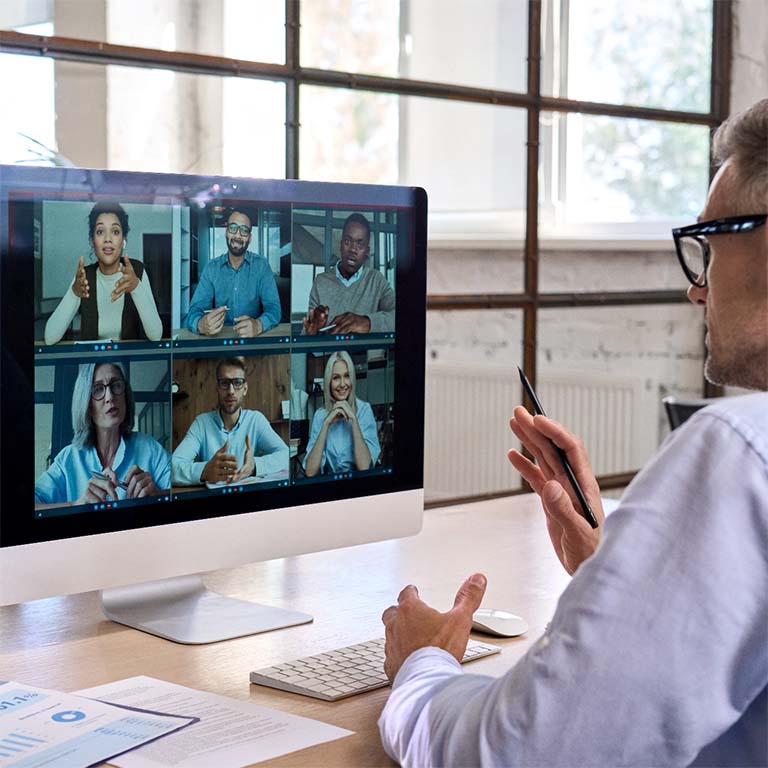
OUR HEADQUARTERS
To create an online event, you can rely on our IT services. With Meetbit, an in-house software house, we can provide all the tools for managing a virtual event, from interventions to gamification services, app development, interactive spaces for sponsors and more.
We provide support on IT services for virtual events from our offices in Florence, Milan and Rome; before, during and after the event, with teams of experts at your complete disposal.
